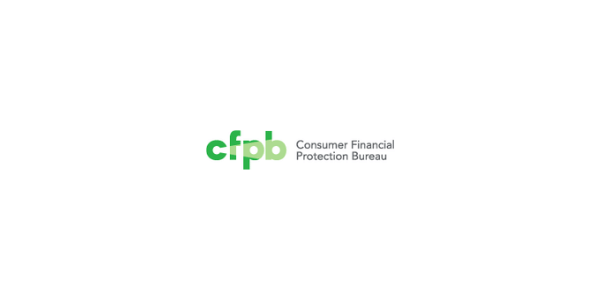
Feeling Like A 'Crash Test Dummy'

Rate-sensitive housing market buckles up after the Fed tries again to slow the economy.
If inflation in the U.S. economy is like a sports car, then the housing industry was the “crash test dummy” that wasn’t wearing a seatbelt when the Federal Reserve began stomping on the brakes.
That’s the opinion of Odeta Kushi, deputy chief economist for First American Financial Corp., who was among several housing industry observers reacting to the Fed’s announcement Wednesday that it had approved another 0.25% hike in its benchmark interest rate as it continues to battle stubbornly high inflation.
Fed Chairman Jerome Powell announced the unanimous decision of the Federal Open Market Committee (FOMC) to impose its ninth straight increase in the federal funds rate in 12 months, while also stating that one more increase is likely this year.
While not ruling anything out, Powell said the FOMC factored into its latest decision that the recent banking industry crisis — including the closures of Silicon Valley Bank and Signature Bank — is also tightening credit.
“Tightening of credit conditions are substitutes for rate hikes,” he said, “but at the end of the day, we will do enough to bring down inflation. No one should doubt that.”
Rate-Sensitive Sector
The nine rate hikes have increased the target range for the federal funds rate from zero in March last year to 4.75% to 5% after Wednesday’s boost. While the hikes do not directly affect mortgage rates, they have been the impetus for increases that have seen mortgage rates nearly double over the past year.
“Real estate is a very interest rate-sensitive sector, which is why when the Fed first hit the proverbial brakes on the economy by hiking interest rates, the housing sector was the first to go through the windshield like a crash test dummy,” Kushi said. “As long as the Fed’s fight against inflation persists, it will continue to put downward pressure on the housing market because mortgage rates typically follow the same path as long-term bond yields, which move with inflation expectations and the Fed’s actions.”
“The irony of the latest bank failures,” she noted, “is that heightened investor uncertainty pushed investors to buy more Treasury bonds, resulting in declining yields on the 10-year Treasury, and a decrease in mortgage rates. Lower mortgage rates — all else held equal — boost house-buying power. An increase in affordability is good news for the housing market, especially heading into the housing market’s busiest season.”
Kushi said the combination of stubbornly high inflation and the banking crisis left the Fed with a difficult choice.
“Continue to fight inflation, raise rates, and see if the real estate crash test dummy can withstand the shock, or pause and see if the banking system responds favorably or depositors lose confidence, and another crash test dummy goes through the windshield,” she said.
Don’t Waste A Crisis
Marty Green, a mortgage legal expert and principal with the Texas law firm Polunsky Beitel Green, said the Fed may have made the wrong choice.
“While the unfolding banking crisis of the last couple of weeks caused many industry experts to call for the Federal Reserve to pause its interest rate hikes, the Federal Reserve ultimately decided to move forward slavishly with another quarter-point increase,” he said. “Since the recent shock to the banking system will almost certainly lead to a significant tightening of financial conditions — as banks and financial service providers become more cautious with the allocation of capital to potential borrowers — one hopes that the Federal Reserve has not let a good crisis go to waste.”
Green said he believes the Fed missed a chance to pause its rate hikes.
“Teetering confidence in the banking sector, even if currently contained to a small number of banks, offered the Federal Reserve a perfect opportunity to pause without signaling that it was throwing in the towel on inflation,” he said. “Instead, the Federal Reserve appears to be continuing to dance to last month’s music, not fully aware that the tune is vastly different today.”
Zillow Senior Economist Orphe Divounguy seemed to agree, stating that the link between bond yields and mortgage rates has been altered by the banking crisis.
“Bond yields — and the mortgage rates that tend to follow them — fell in the immediate reaction to the Fed’s statement, which signaled that the central bank’s program of rate hikes is likely nearing its end to balance new financial risks,” Divounguy said. “But the relationship between mortgage rates and Treasuries has weakened slightly in recent weeks as the secondary mortgage market reacts to speculation that more financial entities may need to sell their long-term investments, like mortgage backed securities, to get more liquidity today.”
He said the path forward for mortgage rates “will largely depend not just on the path of the 10-year (Treasury) and economic uncertainty in general, but also on the extra uncertainty specific to the secondary mortgage market.”
Divounguy said tighter credit conditions likely will limit any “dramatic, near-term downward movement of mortgage rates, even as Treasuries decline. This could restrict mortgage lenders’ access to funding sources, resulting in higher rates than Treasuries would otherwise indicate.”
For borrowers, he said, “lending standards were already quite strict, and tighter conditions may make it more difficult for some home shoppers to secure funding. In turn, for home sellers, the time it takes to sell could increase.”
In the medium-run, he added, expectations for slower economic growth and lower inflation should help mortgage rates decline. “This would benefit home shoppers through better affordability, and sellers by reducing the intensity of interest-rate-lock in. That could help free up a tight market, though that would coincide with a period of increased risk of job losses.”
A ‘Dovish Hike’
Mike Fratantoni, senior vice president and chief economist for the Mortgage Bankers Association (MBA), said the Fed still has work to do, even if the rate hikes end soon.
“Even with the heightened financial market volatility stemming from recent bank failures, the FOMC decided at its March meeting to increase the federal funds target another 25 basis points,” he said. “However, this was a ‘dovish hike,’ as the commentary and economic projections suggest we may be at or near the peak fed funds rate for this cycle.”
“Inflation is still quite high, but it is slowing,” Fratantoni continued. “And while the job market is still quite strong, it is weakening, as evidenced by slowing wage growth. Coupled with the advent of much tighter financial conditions after the events of the past couple of weeks, we are anticipating a much slower economy over the next few quarters — which should further bring down inflation per the Fed’s goal.”
As for homebuyers, Fratantoni said they have demonstrated in 2023 that they are “quite sensitive to any changes in mortgage rates. With this move from the Federal Reserve, MBA is holding to its forecast that mortgage rates are likely to trend down over the course of this year, which should provide support for the purchase market.”
He added that the housing market was the first sector to slow as the result of tighter monetary policy, and should be the first to benefit as policymakers slow — and ultimately stop — hiking rates.
“The (FOMC) statement indicated an intent to continue quantitative tightening, allowing Treasury and agency MBS (mortgage-backed securities) to passively roll off the Fed’s balance sheet,” he said. “We expect that the recent increase in direct lending by the Fed through the discount window and the new term lending facility will help to improve liquidity for banks, despite this ongoing reduction in the size of the Fed’s securities holdings.”
Hannah Jones, an economic data analyst with Realtor.com, said there are signs that things will improve in the housing market, even though it hasn’t shown up yet in the Consumer Price Index.
The CPI rose 0.4% in February on a seasonally adjusted basis, after increasing 0.5% in January, the U.S. Bureau of Labor Statistics reported last week. Over the last 12 months, the all-items index increased 6% before seasonal adjustment, the BLS said. The index for shelter was the largest contributor to the CPI, accounting for over 70% of the increase.
“Data from private providers, including Realtor.com, show a clear deceleration trend in both asking rents and asking prices for homes,” Jones said. “This moderation will eventually be picked up in the government’s inflation measure.”
Elevated mortgage rates, combined with high prices, have stifled housing demand over the last year, she said.
“The rate on a 30-year fixed-rate mortgage has remained in the 6%-7% range since September 2022, up more than 300 basis points, on average, compared to the previous year,” Jones said. “However, the continued strength of the job market means that both sellers and buyers are still in a favorable financial position heading into the spring housing market.”
She noted that real estate markets remain underbuilt by about 2.3 million new homes, which has kept a lid on supply.
“The looming question over the housing market,” she said, “revolves around how buyers and sellers will reach agreement on pricing in an environment of higher borrowing costs, and if that will be motivating enough for other homeowners to list their properties.”



